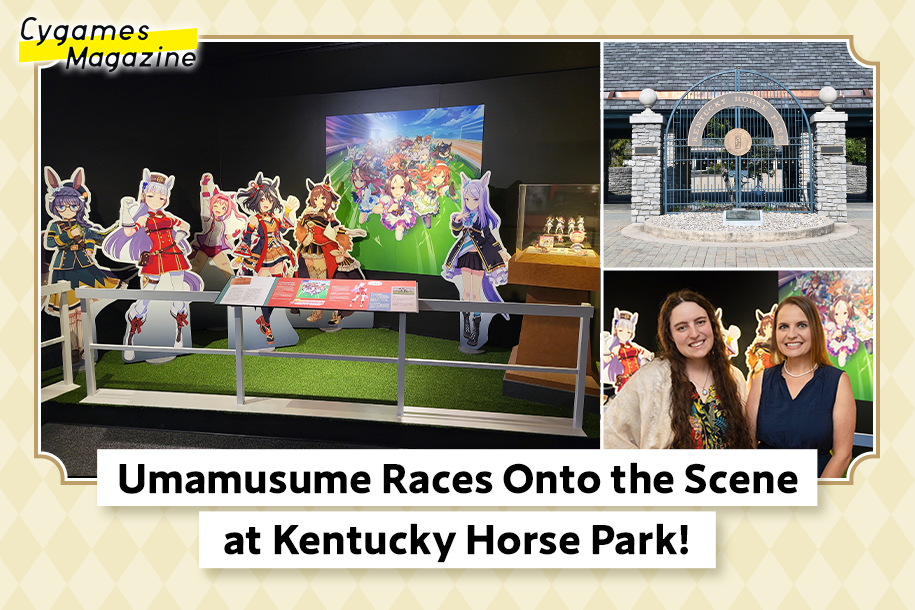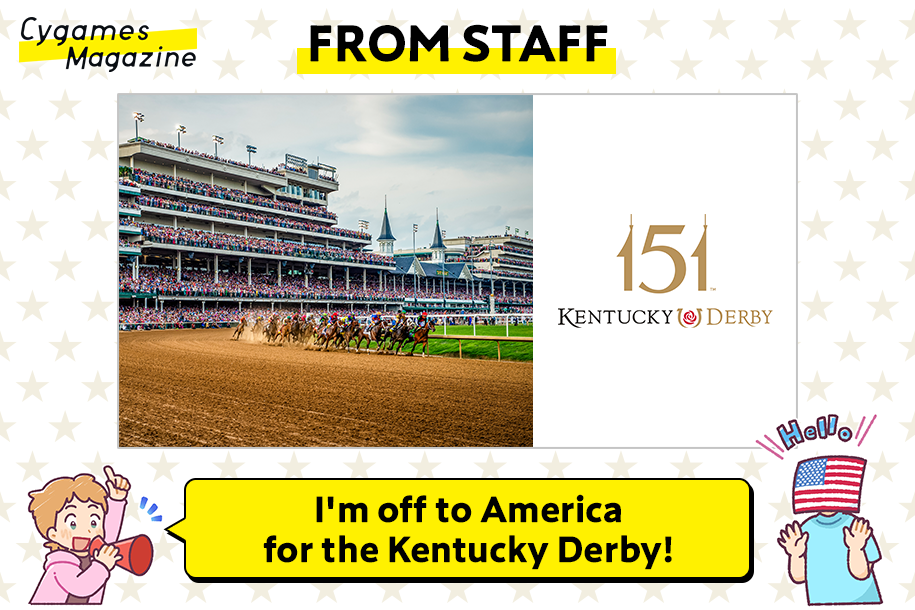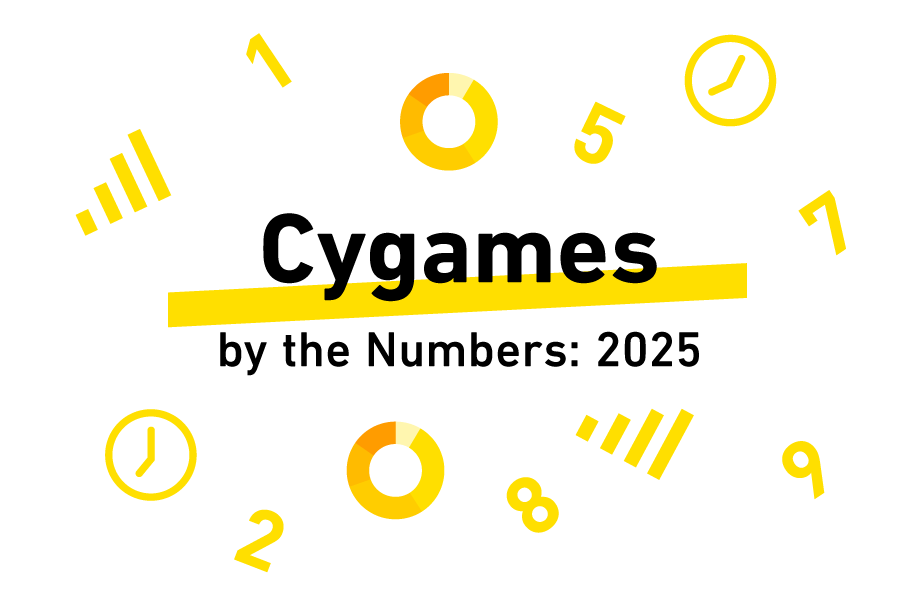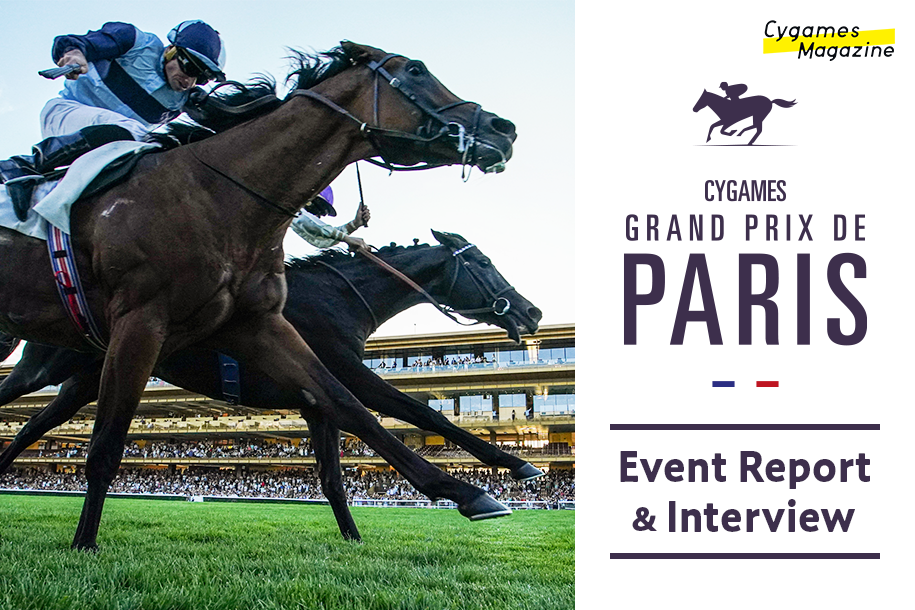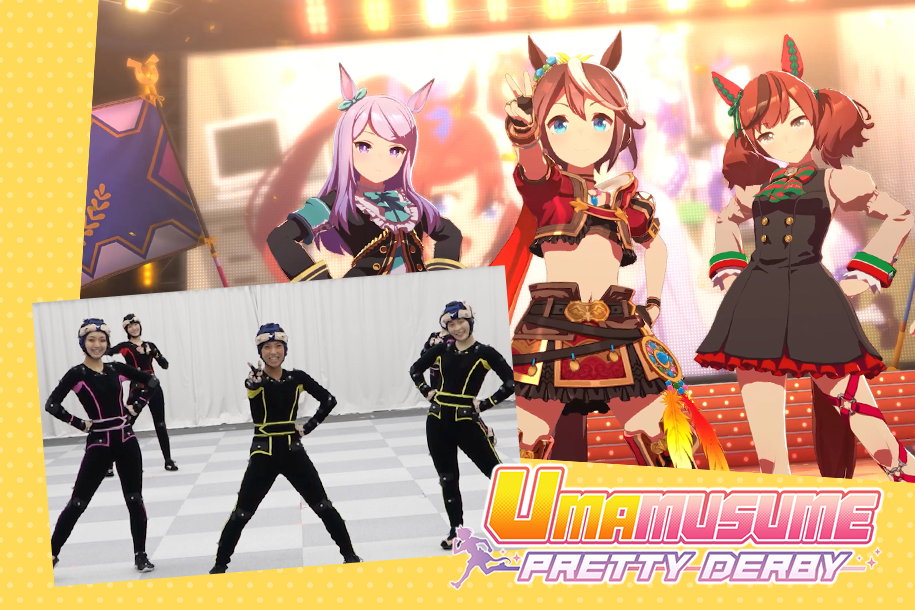Running Toward a Common Goal: Umamusume’s Art Director on Bringing Characters to Life
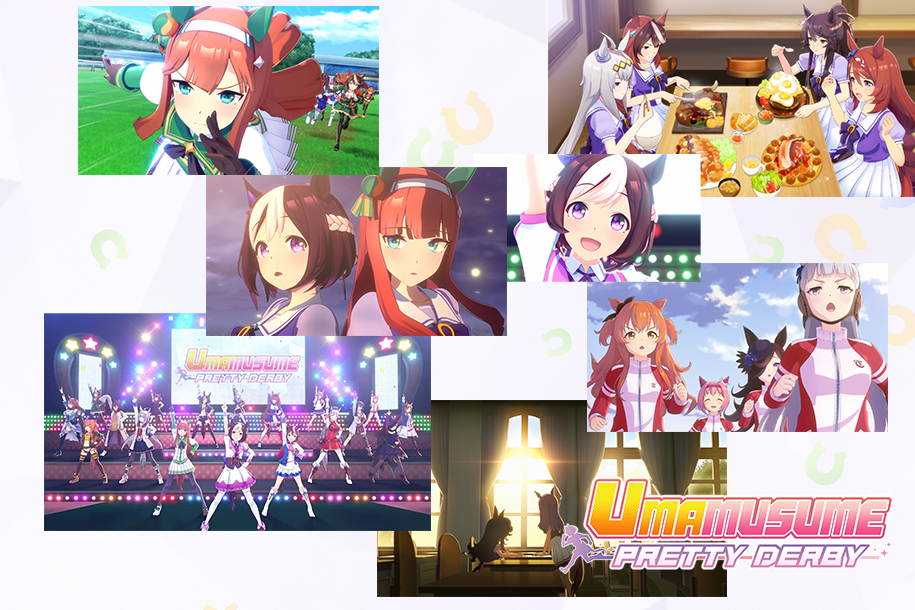
Umamusume: Pretty Derby is a multimedia franchise that includes multiple animated series, comics, and music. With the launch of the game, we sat down with the art director for an exclusive behind-the-scenes interview to uncover the creative secrets behind making the Umamusume shine, explore the development team’s perspective on horse racing, and delve into even more fascinating insights.
- Art Director for Umamusume: Pretty DerbyTakumu
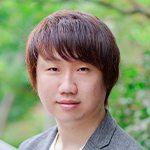
- Joined Cygames in 2014 working on Princess Connect! Re:dive. Joined the Umamusume: Pretty Derby team in 2018, where he now oversees art direction for the whole game.
Forging Authentic Connections: Making a Title That Warms the Heart as You Grow with the Umamusume
In this game, girls who are based on real-life race horses compete in heated races. What was the central concept that you kept throughout the project?
There were many, but we kept believability at the forefront of our minds.
What does that entail for Umamusume, exactly?
Umamusume are girls with horse ears and tails who compete in races from the real world of horse racing. They also sing and dance at concerts, but despite the unusual setting and their distinctive appearance, we’ve made sure to highlight their friendships, efforts, and everyday life in order to create a rich and dramatic world.
In order to do that, we constantly ask ourselves what we can do to enhance each character’s charm, taking care to draw everything carefully—even in minor scenes. In doing so, I think it cultivates an authentic connection when you see the Umamusume you trained working so hard in her races and concerts.

So you wanted the Umamusume to feel more realistic?
Yes. As the development team, we want the game to give the Trainer (the player) a chance to run in tandem with their trainee toward a common goal, and share the excitement as she grows, passion when she gives her all in a race, joy when she achieves her dreams, and the sense of achievement that follows. For that to happen, the Umamusume need to feel real, so our goal was to make these girls who have horse ears and tails feel as familiar and believable as possible.
As the art director, what do you focus on in particular to create that sense of believability?
Highlighting the unique traits of each and every character.
In 3D game development, it’s often cost-effective to reuse the same poses and facial expressions on all of the characters, but in Umamusume, we made a wide range of scenes that could showcase each character’s individual charm. I believe that the cumulation of these thoughtful details allows players to instantly catch a glimpse into a character’s personality and want to learn more about them.
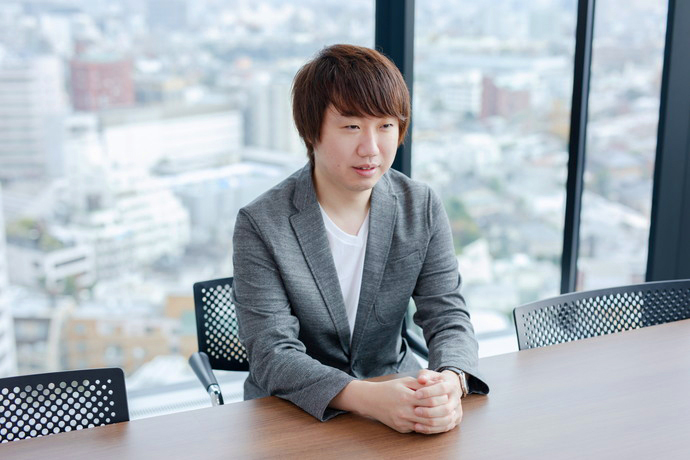
The first time I opened up the game and saw the opening movie, I was immediately impressed by how lifelike the characters felt.
I’m really happy to hear it. That was precisely the theme we had in mind when we made the opening movie—unique characters that really exist. It begins with a glimpse into their daily lives: switching off an alarm clock, an early morning jog with classmates, laughing and sharing a meal together, their studies, and then after-school training. In the second half, we see their rivalries, the tension before a race, and inspiration—the more serious aspects. The opening movie serves as a snapshot of the game, offering viewers a sense of its depth and a reason to feel passionate about it.
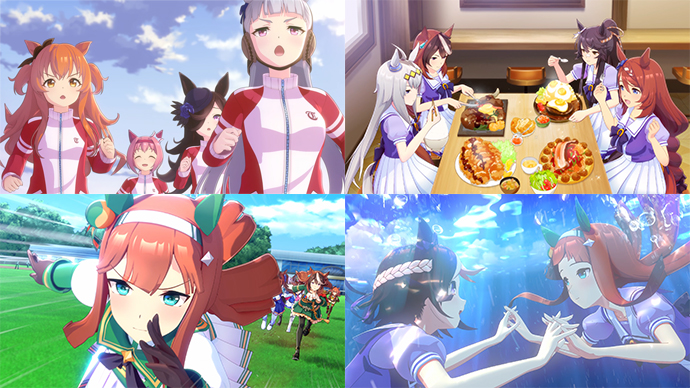
The opening lyric of the song, “It’s time for us to meet at last,” is also deliberate. It marks the beginning of the game version of Umamusume, and I storyboarded the song with the idea of this moment representing something we’ve all been eagerly waiting for: a chance to step forward on a new journey together.
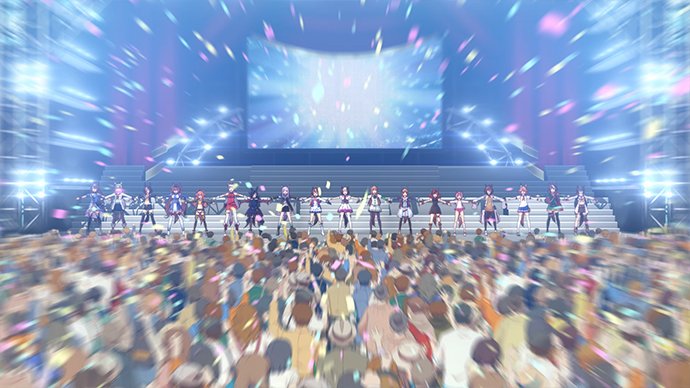
The racing scenes in the game are really powerful.
The writers, storyboard artists, 3D artists, and engineers all work together to faithfully portray the Umamusume, who devote themselves wholeheartedly every day. To distinguish the racing in Career mode, we added dramatic camera angles and impactful 3D character animations to creating a visually powerful experience.
The races in Career mode are modeled after real-world events, but depending on your training, outcomes can unfold differently from what happened in real life. We hope players enjoy crafting unique and exciting races that can only happen in the game.
The winning concerts that play when you win a race are also a unique aspect.
I believe that the concerts are a fundamental element of Umamusume. Even before the television anime aired, the Umamusume were performing live concerts, and there are many fans who have supported them ever since. The winning concerts are designed to meet those fans’ expectations. They play a central role in defining the Umamusume—girls with ears and tails who race and dance.
I’ve heard that even the UI is made to complement each character. How did this idea come to be?
To make the characters feel more familiar, we focused on adding thoughtful elements and details to the UI.
Since players spend a lot of one-on-one time with their trainees throughout the game, we included small, intentional touches designed to delight those who notice them. For example, the Umamusume you’re currently training appears on the Career buttons, and the UI color changes based on your trainee at the time.
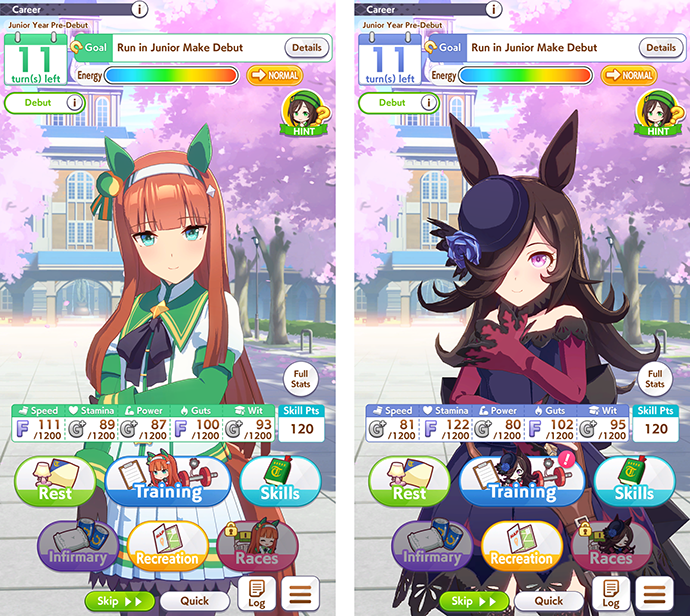
Oh, true! Why did you decide to do it that way?
This circles back to what I mentioned earlier, but the idea came when we were looking for more ways to show each character’s individuality and uniqueness.
Also, while coming up with ways to offer something for players to enjoy, I reminisced about my experiences with games I loved in the past, and the joy of discovering secret settings or missable Easter eggs—it felt like a treasure hunt, in a way. That feeling inspired us to add in our own little details to the game that players might stumble upon, so keep your eye out for them when you’re playing!
Beyond that, the game is like a lunch box packed full with 2D still illustrations, support cards, chibi characters and other elements that bring out the charm and cuteness of each character, so we hope you will enjoy the unique experience with each character as you explore the game.
Attention to Detail in Every Aspect of the Game for Both Horse Racing and Anime Fans
What was the most important point you focused on during development?
One of the core principles we’d adhered to since the early stages of development is our respect for real horse racing. Without horse racing, Umamusume wouldn’t exist. Before proceeding with planning and development, we thoroughly studied horse racing history, drawing from records and images that covered everything from race-day weather and track conditions to the state of the racehorses and how each race unfolded.
This principle is present across various forms of media, including the anime.
Indeed. A major attraction of the anime is the depiction of characters who have connections to real horse racing. To ensure fans of the anime would equally enjoy the game, the same level of care and attention was given to the game’s main storyline. Real-life races were faithfully recreated, seamlessly intertwining the struggles, growth, and drama of the Umamusume.
The 1991 Tenno Sho (Spring) and Arima Kinen are thrilling races that appear in the main story, woven into Mejiro McQueen’s story of growth. The 1992 Kyoto Shimbun Hai and Kikuka Sho also appear, showcasing Rice Shower’s extraordinary abilities.
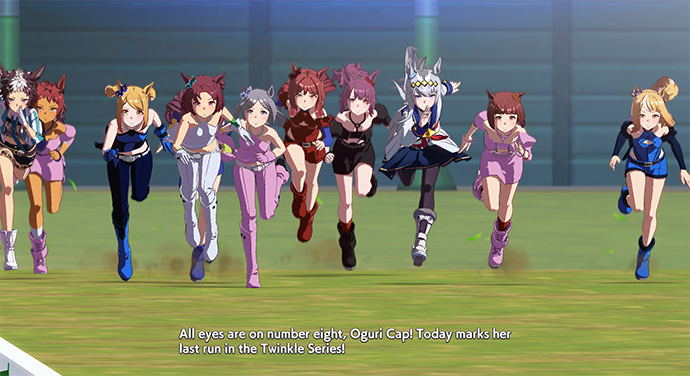
Development from an Art Director’s Perspective:
The Creative Process Behind the Art
I imagine developing the game requires close coordination between the project and other departments. How is the team structured?
The Umamusume development team is quite large within Cygames, and about half of the team is made up of artists. Within the 3D art team alone, we have sections for character models, backgrounds, motion, effects and cutscenes. Similarly, the 2D art team includes dedicated sections for characters, backgrounds, chibi illustrations, UI design, direction, and more. On top of that, we have a diverse team of technical artists and production managers supporting the development process.
You mentioned that as art director, you are mainly involved in planning and supervision. What exactly does that entail?
The answer ties back to the theme of authenticity I mentioned earlier. Many of the ideas that have come to fruition stemmed from asking what we could do to bring out more of the characters’ charm, what features we could add, and how things should look. I brought these ideas to the directors and producers, and more often than not, received the green light to move forward.
For example, take the skill cinematics that play during races. I wanted to have more scenes that emphasized each characters’ individuality, so I drafted up the idea of unique skill cinematics for each character. I think of these cinematics as 7-second character trailers—designed to be fast-paced, energetic, and sastisfying to watch. We use a variety of approaches that depict real-life episodes from the horses that inspired the characters while focusing on acting and direction that capture the essence of their personalities.
The cinematics play when a unique skill is activated during a pivotal moment in the race. The idea came to me while thinking about this how meaningful the moment is, imagining the Umamusume carrying the player’s hopes and dreams as they turn the final corner on the turf, shining brightest on the final stretch…
These ideas weren’t solely conceived between artists and planners. We also received valuable input from members of other sections who told us what they’d like to see.
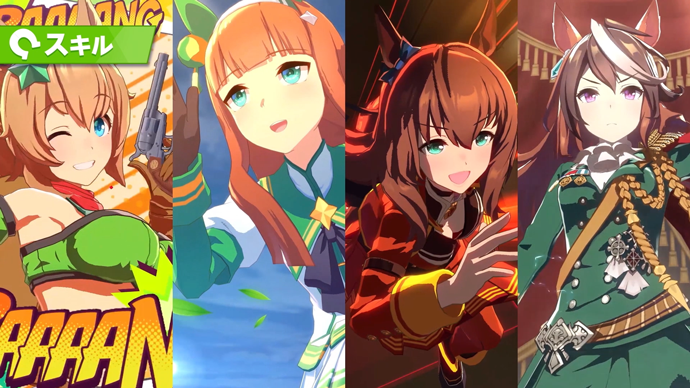
And from there, you make the specifications, the art is drawn, and then you do the final supervision. Is that right?
Right. Each art team’s leader oversaw the art for their section to a high standard, so when it came to my supervision, I was mainly concerned with the overall balance of the elements as a whole and ensuring that they came together as one cohesive game.
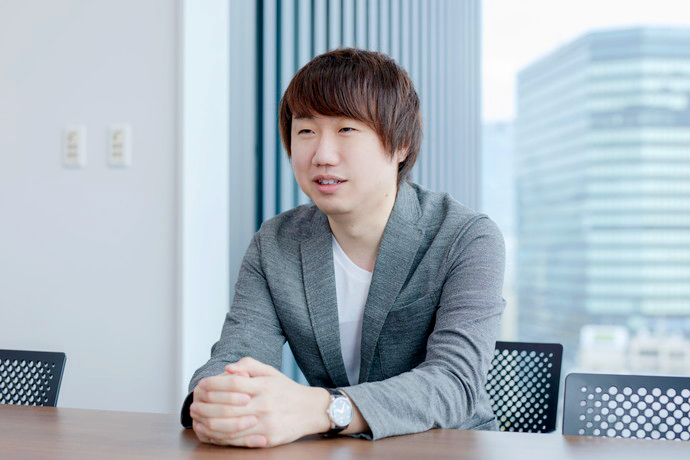
Maintaining the Balance: Overcoming Hurdles in Game Development
Striking a balance sounds like it would be difficult. Did you find it challenging at all?
Figuring out how to balance all of the different elements in the game as actually one of the most challenging aspects of development. Since this combination of genres (horse racing and idols) was largely uncharted territory, and with so many facets to the game—training, racing, and concerts—to consider, it was a constant struggle for us to find the right balance.
I see. Was there anything you found difficult to balance on an artistic level?
On the art side of things, we have 3D models, 2D illustrations, and chibi characters. What I deliberated over the most was which combination of styles to showcase the characters in the most appealing way. Do we use them all equally, or prioritize one over the others? There were countless possibilities, and it wasn’t easy to decide which approach was correct.
How did you resolve it in the end?
Although uncertain at first, as development progressed, it became clear that both 3D and 2D elements brought their own merits to the game.
3D excels at depicting dramatic and realistic scenes through the detailed expressions, lifelike animations, and dynamic camera work. On the other hand, 2D illustrations can capture an entire scene in one picture, sparking the viewer’s imagination. They can be used to portray relationships between characters and add comedic dialogue. Finally, chibi characters were incorporated occasionally for a light-hearted, whimsical change of pace.

Each team member gives their utmost attention down to the tiniest detail, never compromising on quality. This approach allows us to depict a wide variety of scenes effectively and plays a key role in defining the unique identity of the Umamusume style.
So that’s how you made the distinction between 3D and 2D. I thought you chose the one you wanted to see. When it comes to 3D in particular, you use a wide range of facial expressions. Was that intentional?
Facial expressions were another challenging aspect of the project. With 3D, the level of detail you can achieve makes it tempting to keep refining things endlessly. While some can be reused, they’re not always sufficient to convey the right nuances, meaning there were many instances where we had to fine tune the details to suit the situation.
Umamusume Was Created by a Team in Endless Pursuit of Quality
Besides the graphics, the conversation scenes in the main story also feel well put together. Can you share any moments where you felt the team’s passion?
In the beginning, we were working on a simpler production, but one day the script team showed us a demo video of what could potentially be achieved—it was astonishing, really.
The motion and facial expressions changed frame by frame, completely in sync with the conversation, making the characters feel incredibly lifelike. Once the team saw that demo, we knew that we wanted to make it happen. The fact that we did end up doing so was an episode very typical of Cygames (laughs).
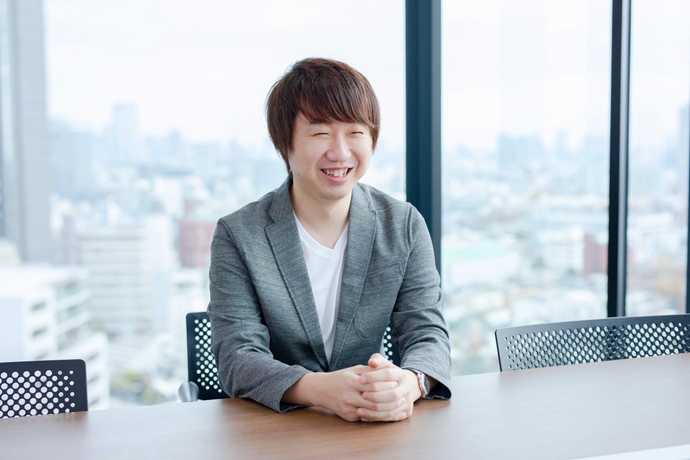
Later, people who’d come from the anime industry also got involved in the main story, and the layout of each scene was cut and camera work was included to create a more immersive experience.
How were you able to develop such a large amount of content?
We generally produced the scripts and camera work manually, but we developed internal tools to boost our efficiency. For example, up until that point we used Unity to preview Excel data, but with the support of our engineers, we made a specialized timeline tool specifically for Umamusume that allowed us to review and apply changes immediately, dramatically streamlining the iteration process.
We’re continually refining its UI and overal usability, ensuring that anyone can use it with ease.
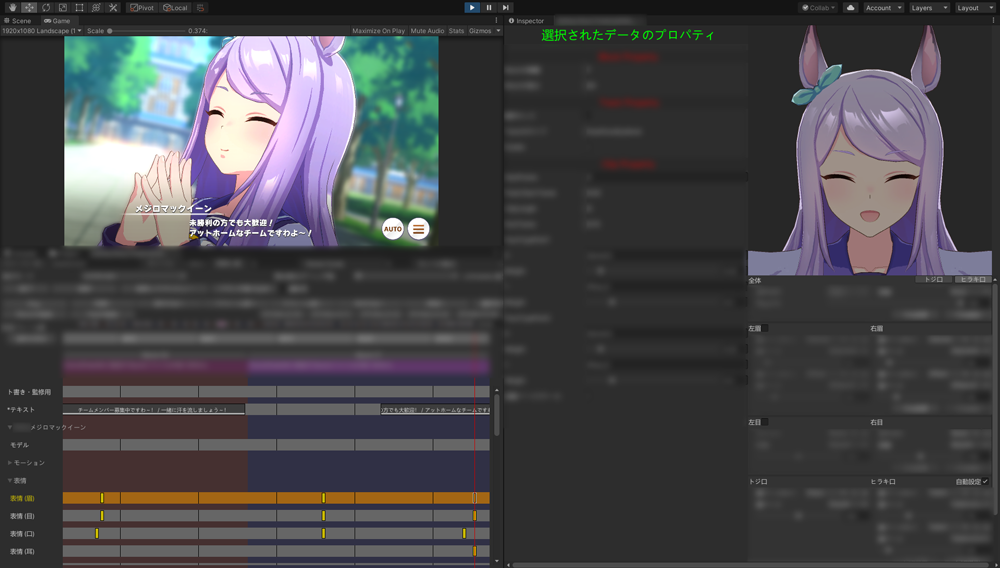
It sounds like the creation of specialized tools was a major factor.
In order to create highly detailed work without compromising on quality, it’s also important to create a system and environment that’s easy to work in. Umamusume is a large-scale, complex project, but I believe that it’s thanks to the groundwork we laid that we managed to achieve as much as we did.
The Race Starts Now: Thoughts and Outlook for the Future
Finally, do you have a message for the people who’ve been waiting for this game’s release? Is there anything you’d like them to look out for, or any word on future developments?
A lot of time went into creating the game Umamusume. Some of our players have been fans since before the game’s release through music, manga, and anime—while some have been looking forward to playing the game ever since it was announced. After the long wait, we’re confident that our staff’s efforts have combined to create a title that you’ll be happy with!
I plan to continue pouring my enthusiasm into managing the game from here on too. Even if we feel confident that you’ll enjoy it, we can’t call it the best game unless we listen to the voices of our players and try to meet their expectations. We will regularly update the game and continue to make improvements and advancements to ensure that the quality of the game is unrivaled.
The story of Umamusume has only just begun. We believe that this is the start of the race, so keep your eyes peeled for more!




